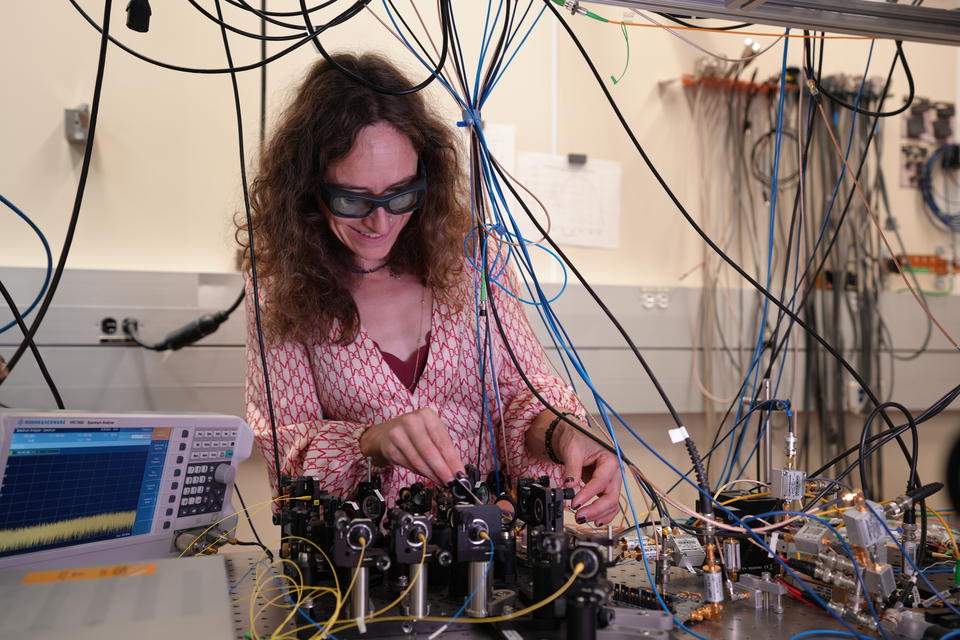
Esther Baumann works in the lab where a team of researchers has developed an improved version of a laser-based measurement technique called dual-comb spectroscopy.
R.Jacobson/NIST
Scientists at the National Institute of Standards and Technology (NIST) have developed a new laser-based technique that could dramatically improve our ability to analyze a variety of materials and gases, including greenhouse gases. This new method, called "free-form dual-comb spectroscopy," offers a faster, more flexible and more sensitive way to analyze substances in the air and other materials.
In this specific study, published in Nature Photonics, researchers demonstrated that their laboratory-based system could detect a single gas, in this case the potent greenhouse gas methane, with 22 times higher sensitivity than a traditional dual-comb system. This increased sensitivity could one day help identify small leaks or emissions that might otherwise go unnoticed, potentially aiding in efforts to combat climate change.
Technological Advancements
Spectroscopy is a sophisticated technique that allows scientists to identify and measure different materials by observing how they interact with light. Just as a prism separates white light into a rainbow of colors, spectroscopy separates the light coming from or passing through a substance, revealing its unique "fingerprint" and providing valuable information about its properties and composition.
The NIST researchers have created an improved version of a laser-based measurement technique called dual-comb spectroscopy. Dual-comb spectroscopy is a particularly high-resolution form of spectroscopy that allows many colors of light to be examined at the same time and in fine detail.
The new laser measurement technique improves on older methods by allowing scientists to control the timing of laser pulses with incredible precision. This precise control lets them focus on the most important parts of a sample's fingerprint and ignore areas that don't provide useful information. As a result, the smarter system can detect and measure substances much faster than before.
This new approach can be used in several ways. For example, scientists can use it to quickly create images showing how the gas is distributed in space. Alternatively, if researchers don't know exactly what kind of gas is in the area they are investigating, they can use a generic technique called compressive sampling. This is a "smart" method of making measurements, concentrating on areas likely to have important information and taking fewer measurements elsewhere. This strategy makes the whole process 10 to 100 times more efficient than traditional methods.
Visualizing Gas Plumes
This technology can create fast, detailed images of a variety of gas clouds. In this study, researchers created real-time images of methane plumes. Methane is a potent greenhouse gas that contributes to climate change, so being able to detect and address these leaks efficiently could one day help protect the environment and improve air quality. By quickly generating images of methane plumes, scientists could quickly identify where gas is escaping.
">






